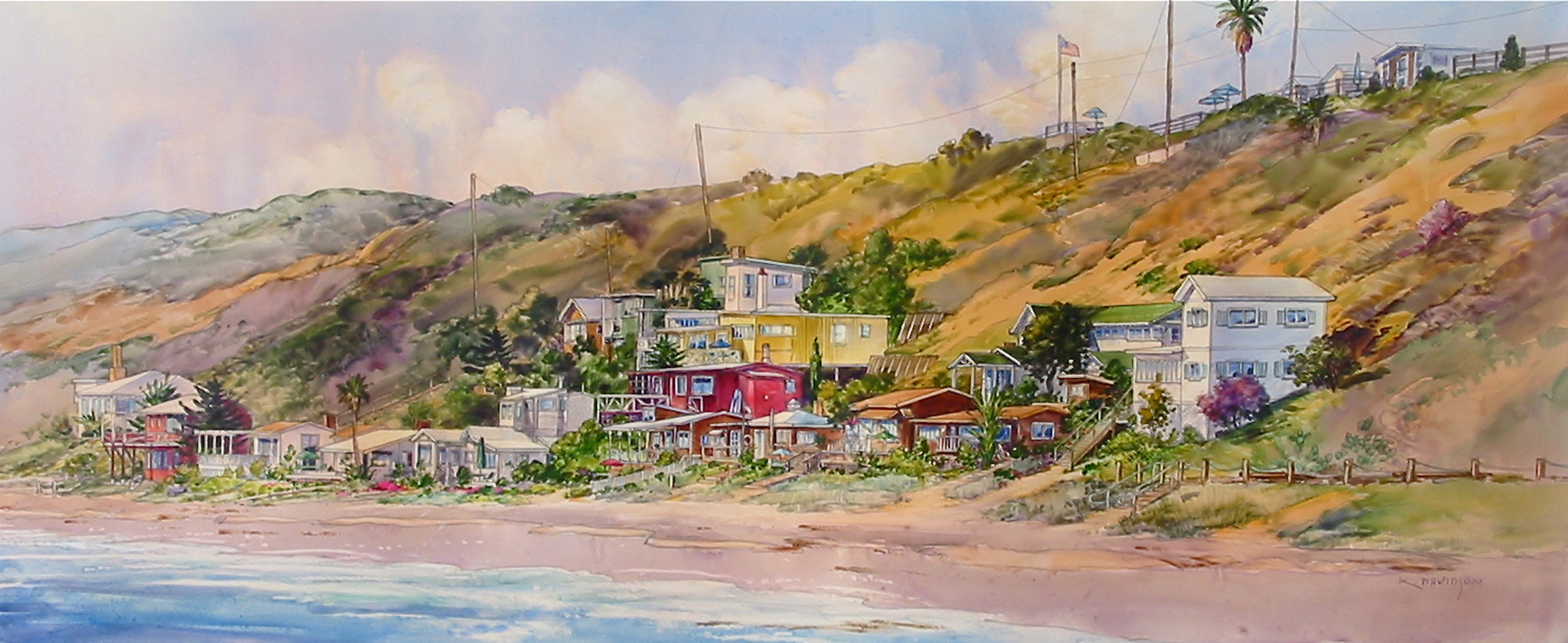Why Native Plants Nurture Cleaner Oceans
By Gina Dostler
Orange County Coastkeeper is a nonprofit organization locally established by Garry Brown in 1999 when he observed damage being done to the ocean. His son and garden director Austin Brown uses the public gardens planted two years ago to demonstrate the impact of drought tolerant landscaping.
Q: What is Orange County Coastkeeper?
A: It’s a nonprofit clean water organization that actually does all kinds of things. It was founded by my father, Garry Brown, to educate, advocate, restore, research, enforce, conserve and even litigate all in the name of clean water. We collaborate with diverse groups, both public and private sectors, to achieve healthy, accessible, and sustainable water resources for the region. Our belief is all people have the inalienable right to clean water.
Q: How do gardens and lawns factor in the clean water issue?
A: Gardens and lawns have a lot of environmental elements that can contribute to water runoff. One of the reasons my father started this organization was observing the effects of pollution in the water surrounding our boat we had in the harbor. Fertilizers, pesticides, trash enter the sewers and pour directly into the ocean. Our old habits of granulizing this, spraying that with chemicals, is not necessary and needs to be changed. We want to show people how to connect the dots from the gardens and lawns they maintain to the damage caused by the water run-off and waste from these gardens that appear in our bodies of water.
Q: So you teach about drought tolerant landscapes?
A: Yes, that is just one of many ways we help. It’s one thing to talk about it, but actually seeing it firsthand makes a lasting impression. About two years ago we finished a showcase of six common habitats set in mock backyards with different styles of architecture – Spanish, Italian, traditional, bungalow, craftsman, and ranch. And we landscaped them all differently with a common habitat that fits each style of the home. These vignettes sit in 2.5 acres located in Santiago Canyon College on the corner of Chapman and Jamboree in the city of Orange. We lease the land from them for $1 a year and are so lucky to have collaborated with them.
Q: What types of habitats did you create?
A: The habitats are oak woodland, chaparral, coastal sage shrub, desert, grassland, and riparian. All are California friendly landscapes, drought tolerant and maintain a balance of wildlife such as bees and birds to keep our ecosystem balanced. A drycreek bed or bioswale acts as a built-in water reservoir meandering through each of the vignettes. The whole thing is set up in a giant L and basically starts with the oak woodland and ends at the riparian. This helps to eliminate water runoff when it rains so it doesn’t enter into our drainage system.
Q: What other systems do you have?
A: We have drip irrigation throughout the whole thing and have installed rotator sprinkler heads, perfect for reducing water evaporation. These heads can easily replace other sprinklers that are not water-wise. We also teach how to stop using pesticides, synthetic fertilizers and how to start using worm castings, fish emulsion and to pull weeds by hands all in the name of safe, clean water. We also demonstrate how mulching saves water and enhances the soil. We offer free workshops, though donations are always welcomed, so people learn first-hand how to transform their yard.
Q: Tell me about your monthly workshops?
A: The first Saturday of every month at 10 a.m. we have a landscape workshops for adults that range from learning about drought tolerant plants to the basics of mulching and other ways to change your garden to be environmentally friendly and water-wise. It’s also a great place to bring the whole family. On the third Saturday at 10 a.m. is the family workshop geared to open people’s eyes to their own backyard and involves the whole family working together to make positive changes. Plus our riparian habitat has a kid’s natural playground with trees bent over to form a tunnel, a long concrete pipe tunnel, arching logs, and pathways that create an interaction with nature and of course fun for kids of all ages.
Q: Some people are put off by the extra cost to turn over to a drought tolerant landscape.
A: It’s a bit deceptive. Actually in the long run, the added cost pays off, not only in dollars but in the health of our environment. The drought tolerant landscape ends up costing about $6 per square foot, yet requires less maintenance and in the long run the operating cost is reduced by more than half. And our coastal waters end up cleaner, keeping our ocean habitats healthy and abundant. Here’s a good website to check out: bewaterwise.com.
Q: Explain bewaterwise.com
A: It’s established by Metropolitan Water District of Southern California, the major water wholesaler to the whole southern California area. They offer ways to save money and save water. Right now it has a program to rebate $2 a square foot when you transform your lawn into a drought tolerant landscape. And each city might add to that incentive, such as the city of Anaheim adding another dollar towards the Metropolitan rebate. So from $6 per square foot, you can get a drought tolerant landscape around the range of $3 to $4 per square foot. They also offer rebates on rain barrels, high-efficiency nozzles, irrigation controllers, and soil moisture sensors.



